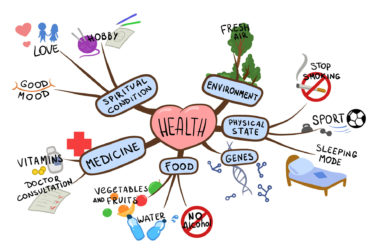Don’t you just hate the car buying experience? So many options, decisions to make, different opinions, sources of research, places to go, long-term commitments—and so much money! As a result, many of us put off the car buying experience as long as possible and angst at the mere thought of it. With different brands, dealerships, sales people, and so many different features and packages from which to choose, it’s a complex decision. What does “electric power-assisted rack-and-pinion steering” even mean? Don’t even get started on “multi-angle rearview cameras with dynamic guidelines.” And the benefits—speed, safety, reliability, gas mileage, environmental friendliness—don’t we all want all of these?
If you think about it, the healthcare “buying” experience feels much the same, with different diagnoses, second/third opinions, too much online information, all the different healthcare providers (PCPs, specialists, lab techs, pharmacists), and the costs! Features such as dosing, delivery, testing, nutrition, fitness and lifestyle changes promise so many proposed benefits, including improved symptoms, better health, lower/higher test results and less risk of morbidity/mortality. Don’t we all want to live longer?
So it’s no surprise when it comes to initiating or maintaining management of our healthcare, patient denial and apathy are rampant. We put off the process as long as possible and again, angst at the mere thought of it. We’re bombarded by “feature/benefit selling” every day, across multiple channels (online, TV, radio, print, etc.). As a result, we’ve become very good at tuning it all out. Even when we hear the ads, the vast majority of us don’t “believe” them. In a recent Harris Interactive poll, only 11% of those surveyed felt “the pharmaceutical industry was normally honest and trustworthy enough to believe a statement by a company in that industry.”
Breaking the Mold
In 1991, a small team of Circuit City executives met to formulate a plan for a top secret new business, code named Project X. For nearly a year the group worked clandestinely, finally pitching a proposal for a revolutionary new big-box retail chain with the potential to earn tens of billions of dollars in annual sales. CarMax Auto Superstore opened in Richmond, Virginia in 1993 and immediately encountered skepticism from insiders and analysts alike because:
- The lot was stocked with more cars than some dealerships sell in a year.
- They used non-negotiable sticker prices.
- Commissions were flat, so the sales incentives were aligned with the customer.
Customers haven’t stopped flocking to the lots since. CarMax sales reached nearly 5,000 cars per store last year—five to 10 times the industry average. Customers go for the exceptional experience, including choice, non-threatening environment and set price. CarMax revolutionized the customer experience associated with buying a car—from feature/benefit selling to customer experience (CX) marketing.
To re-engage patients and healthcare providers (HCPs), produce better health outcomes, and generate greater business results, a transformation must occur in the healthcare industry as well—a change in focus from feature/benefit selling to CX marketing.
Moving Farther Away From Feature/Benefit Selling
In today’s world, patients and physicians have easy access to most of the information they need to make necessary decisions—product information/comparisons, clinical study data, expert opinions and customer experiences. Gone are the days when marketers and sales people had to deliver the product’s features and benefits, as our customers typically have this information already (and may not perceive “us” as the most credible source of this information).
Today’s point of differentiation in healthcare sales/marketing is about creating positive customer experiences and helping HCPs and patients navigate the myriad interactions throughout their disease/treatment journeys. In essence, to have long-term success, healthcare companies and brands must define all dimensions of the customer experience, truly understand their customers’ journeys and help manage their experiences in a positive fashion.
Planning and Executing CX Marketing
Since we can’t change behavior if we don’t understand the customer experience, journey mapping is the critical step to start the planning process. Patient journeys have many distinct touch points and each one has the potential to modify the patient’s behavior and change the course of their journey including:
- Primary care visits
- Diagnostic exams
- Lab tests (and possibly imaging scans)
- Specialist referrals
- Online searches
- Discussions with friends
- Pharmacy visits
- Possible hospital and/or infusion center visits
- Interactions with insurance companies to address reimbursement struggles
As a result, understanding the different touch points in the journey only gets us so far. To ensure we can act on this knowledge, we need to “operationalize” these maps by defining what the customer is doing, thinking, and feeling at each stage and identify the “key moments of impact” when customers are not only most receptive to our messages, but ready to engage—the make-or-break moments that either keep customers moving forward or cause them to deviate from the plan.
Key Moments of Impact
Sometimes referred to as “moments of truth,” these key moments in the customer journey are the critical or decisive times on which much depends—the crucial moments (TheFreeDictionary.com). They are typically the make-or-break moments in the customer journey in which, if all goes well, the customer will continue the journey and complete the task or interaction (e.g., talk with their doctor, initiate Rx therapy, order their refill). If things go awry, they won’t complete the “interaction” or take the desired action.
Those key moments of impact are where marketers need to focus if their goal is to create a positive customer experience. What’s happening at those moments? What are the customers’ needs and wants? What processes need to be fixed, updated or removed to simplify the journey and reduce customer effort and pain? Surveys and social listening are important feedback mechanisms to help genuinely understand those key moments of impact, especially in areas where such data can provide a clearer understanding of what’s going well and what isn’t.
It’s Time to Stop Selling
Maybe not literally, but certainly figuratively. If the healthcare industry wants to engage their target audiences and truly add value “beyond the pill,” it must move away from pushing brand features and benefits to create immersive customer experiences. We must study and learn from companies like CarMax, Starbucks and Apple, because these analogous companies have embraced this concept and are, indeed, leading transformational change (and market share) in their respective industries.







